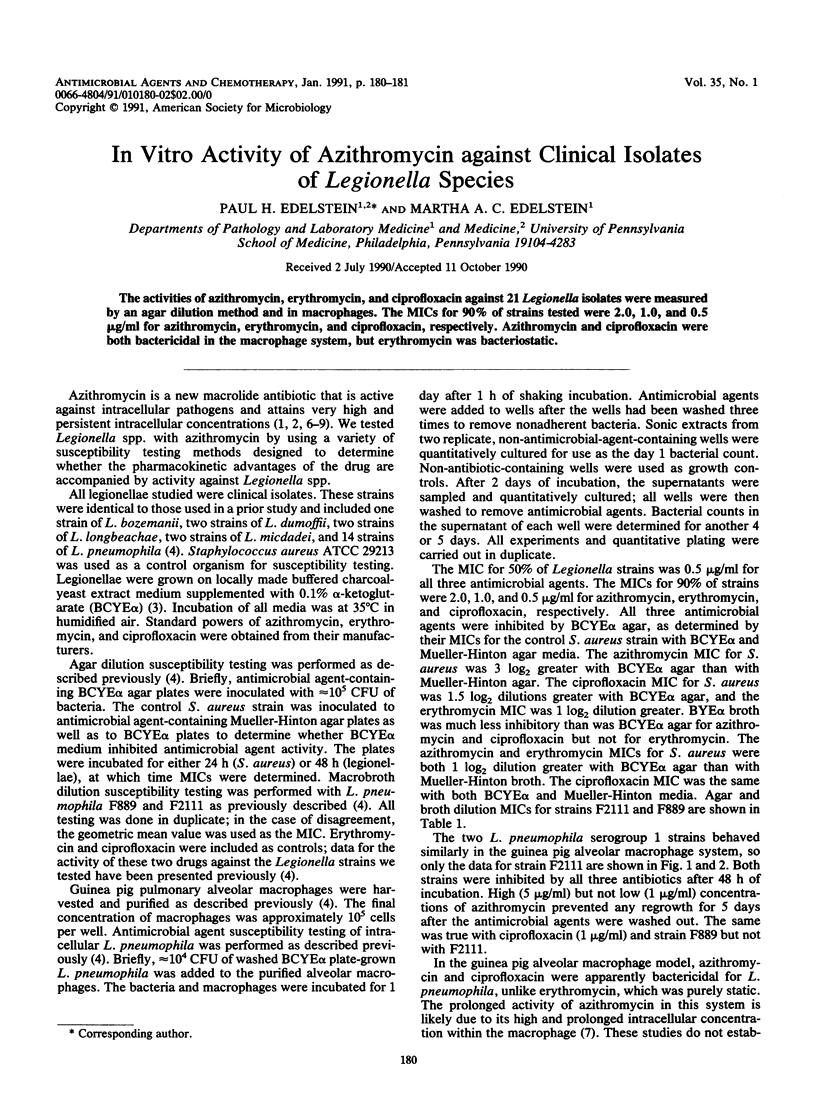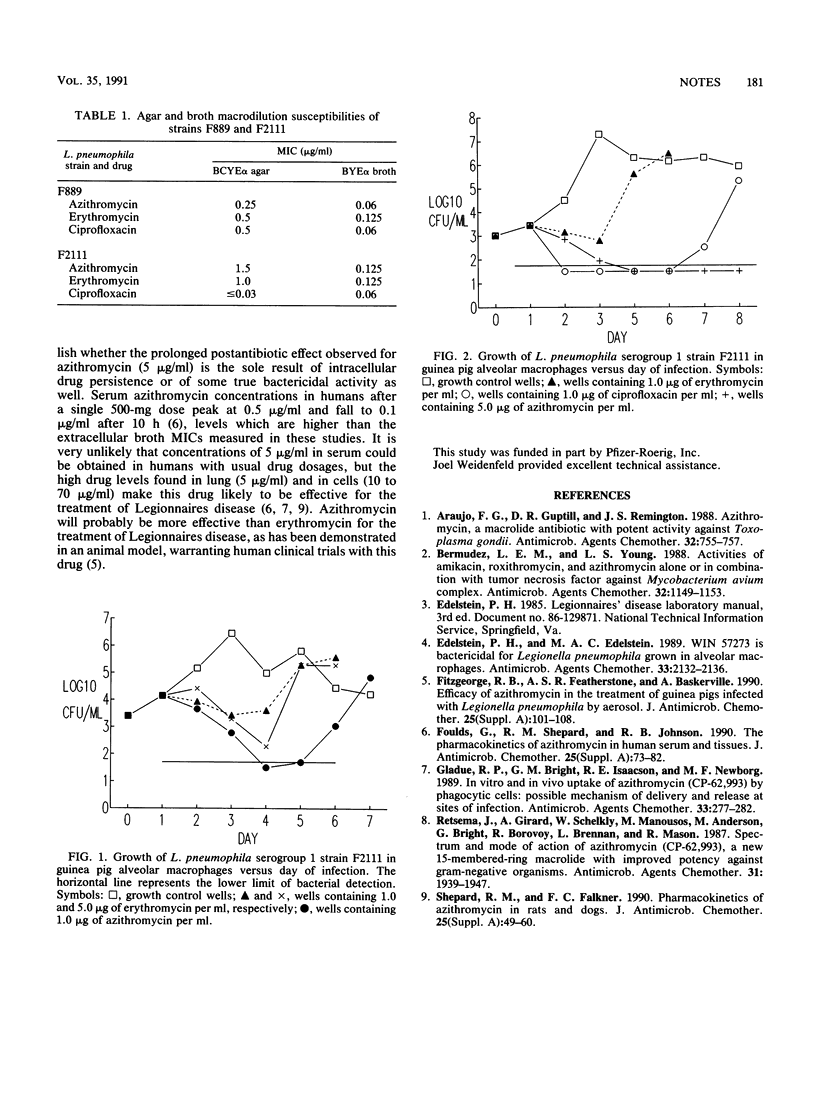Abstract
The activities of azithromycin, erythromycin, and ciprofloxacin against 21 Legionella isolates were measured by an agar dilution method and in macrophages. The MICs for 90% of strains tested were 2.0, 1.0, and 0.5 micrograms/ml for azithromycin, erythromycin, and ciprofloxacin, respectively. Azithromycin and ciprofloxacin were both bactericidal in the macrophage system, but erythromycin was bacteriostatic.
Full text
PDF

Selected References
These references are in PubMed. This may not be the complete list of references from this article.
- Araujo F. G., Guptill D. R., Remington J. S. Azithromycin, a macrolide antibiotic with potent activity against Toxoplasma gondii. Antimicrob Agents Chemother. 1988 May;32(5):755–757. doi: 10.1128/aac.32.5.755. [DOI] [PMC free article] [PubMed] [Google Scholar]
- Bermudez L. E., Young L. S. Activities of amikacin, roxithromycin, and azithromycin alone or in combination with tumor necrosis factor against Mycobacterium avium complex. Antimicrob Agents Chemother. 1988 Aug;32(8):1149–1153. doi: 10.1128/aac.32.8.1149. [DOI] [PMC free article] [PubMed] [Google Scholar]
- Edelstein P. H., Edelstein M. A. WIN 57273 is bactericidal for Legionella pneumophila grown in alveolar macrophages. Antimicrob Agents Chemother. 1989 Dec;33(12):2132–2136. doi: 10.1128/aac.33.12.2132. [DOI] [PMC free article] [PubMed] [Google Scholar]
- Fitzgeorge R. B., Featherstone A. S., Baskerville A. Efficacy of azithromycin in the treatment of guinea pigs infected with Legionella pneumophila by aerosol. J Antimicrob Chemother. 1990 Jan;25 (Suppl A):101–108. doi: 10.1093/jac/25.suppl_a.101. [DOI] [PubMed] [Google Scholar]
- Foulds G., Shepard R. M., Johnson R. B. The pharmacokinetics of azithromycin in human serum and tissues. J Antimicrob Chemother. 1990 Jan;25 (Suppl A):73–82. doi: 10.1093/jac/25.suppl_a.73. [DOI] [PubMed] [Google Scholar]
- Gladue R. P., Bright G. M., Isaacson R. E., Newborg M. F. In vitro and in vivo uptake of azithromycin (CP-62,993) by phagocytic cells: possible mechanism of delivery and release at sites of infection. Antimicrob Agents Chemother. 1989 Mar;33(3):277–282. doi: 10.1128/aac.33.3.277. [DOI] [PMC free article] [PubMed] [Google Scholar]
- Retsema J., Girard A., Schelkly W., Manousos M., Anderson M., Bright G., Borovoy R., Brennan L., Mason R. Spectrum and mode of action of azithromycin (CP-62,993), a new 15-membered-ring macrolide with improved potency against gram-negative organisms. Antimicrob Agents Chemother. 1987 Dec;31(12):1939–1947. doi: 10.1128/aac.31.12.1939. [DOI] [PMC free article] [PubMed] [Google Scholar]
- Shepard R. M., Falkner F. C. Pharmacokinetics of azithromycin in rats and dogs. J Antimicrob Chemother. 1990 Jan;25 (Suppl A):49–60. doi: 10.1093/jac/25.suppl_a.49. [DOI] [PubMed] [Google Scholar]


